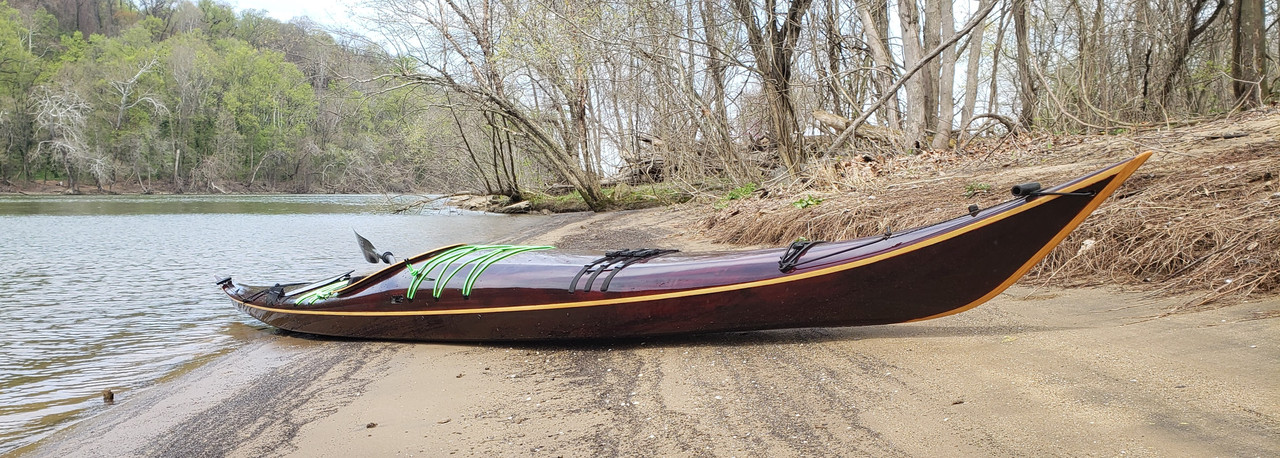Builders' Forum |
|
| ↓ Scroll to Last Comment ↓ | Forum Guidelines | Builders' Forum | |
Getting fillets to match my okoume interior
I'm a big, big fan of unadorned materials for things like furniture, homes, and...boats (I grew up in a house with an unpainted wooden interior/exterior so I think it's where I got this esthetic). That said, I don't exactly love the way fillets look on the interior of my projects; I'd prefer them to disappear somehow. Obviously, the easiest way to accomplish this would be for the fillets and the okoume to match.
I'd have to sand down a heck of a lot of okoume to have enough wood flour to use for an interior of a kayak so I was thinking about staining the interior a slightly darker color to get it closer to the color of the wood flour supplied by CLC. Alternatively, I could go with a different brand of wood flour and perhaps experiment with mixing them to see what they look like after they dry.
Anyone out there have any experience with this that could be passed along? BTW, before I start my next kayak project, I'm doing some experimenting with a few different woods and finishes (including stain) to come up with a set of final finish samples so I can realistically know how different finishes will look. That takes time; each step will need to be treated as I would treat an actual kayak, so drying times will be a factor but it's only useful if I do it right!
4 replies:
RE: Getting fillets to match my okoume interior
hi,
on you note on getting fillet material to match, if you take your time you can make up fillet material that matches. its a bit of work...and fwiw, easier to do with matching darker colors than lighter colors.
as mentioned, sawdust from the same species will be darker....so to match okoume, you would need to work into your sawdust some lighter material. you can do this with sawdust from a lighter species - yellow cedar for example, or some white, alcohol based coloring. then its just experimenting to get the ratio right and then documenting what you did so you can repeat the result and make more.
if i was trying to match okoume, i would probably start with a couple drips of white alcohol based dye into a larger batch of denatured alcohol and then pour it into the a half cup of wood flour....mix it...and the alcohol evaporates off....and now you have 'batch' you can test. so i would be documenting how many drops of white dye to a half cup of wood flour, lightens the wood flour to match the okoume. fwiw....most of the colored wood flour i make is with dyes....i have used saw dust from other species....but its a lot more work and harder to reproduce.
on your notes about test panels for dyes....its a great idea to get a sense of things. i do a lot of staining and would note that how much you saturate the wood with dye has a huge impact on the color.....so in addition to test panels, this will help you get a sense of working with dyes....there is a lot you can do and it can have a very dramatic impact.... below are two boats that i built where dyeing was a big part of the process. below is a night heron with behlens red

and below is a petrel with a lighter behlens stain:
 hope that helps
hope that helps
h
RE: Getting fillets to match my okoume interior
Great advice. I will definitely experiment with some scraps first. BTW, those are gorgeous kayaks!!
RE: Getting fillets to match my okoume interior
I think the one thing to NOT do is to think about staining the hull panels so that they'll match filets. I've stained several boats, on purpose, with the deep red color, and knowing in advance what I was getting into. I did use the stain to dye the filets to make them match, that isn't the issue. The issue is that if you stain hull panels or other structural wood you must 1) do it before any epoxy gets anywhwere near the wood for any part of the assembly, and 2) from that point on do EVERYTHING possible (thin epoxy coat the panels prior to assembly, etc.) to never have to cut or sand into the stained panel. If you ever do remove the stained surface layer from the panel during any of the assembly/sanding/finishing process (and you will to a greater or lesser extent, depending upon how carefull you are) it is almost a guarantee that you can't fix the blemish by re-staining to match. You can come close, but it is almost always something that will be visible.
Bottom line, it will look much better, and the entire build will be very much easier if you simply try to get your filet material to match, or come close to matching, the unstained hull panels or other woods parts. If you choose to create a colored boat with stain, it can be done, and can create a nice looking boat, but it adds a whole 'nother level of difficulty and care to the build process.













RE: Getting fillets to match my okoume interior
» Submitted by Grumpy - Fri, 10/8/21 » 1:53 PM
Interesting...... Building strip boats I know that they closest you are going to get is by using "wood flour" made from the wood it will be installed in. The only problem is that it is still darker, close but darker, when mixed with epoxy.